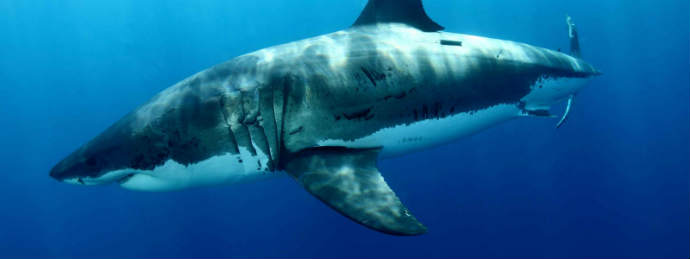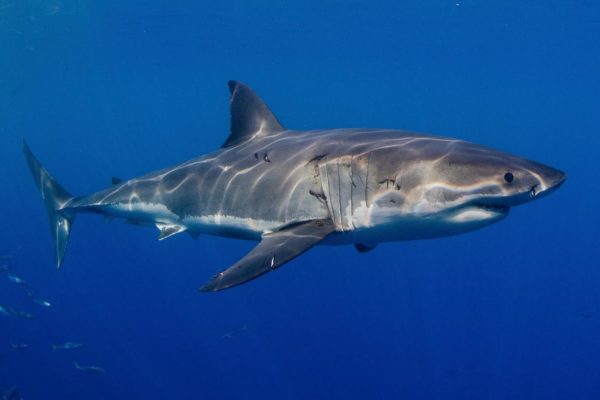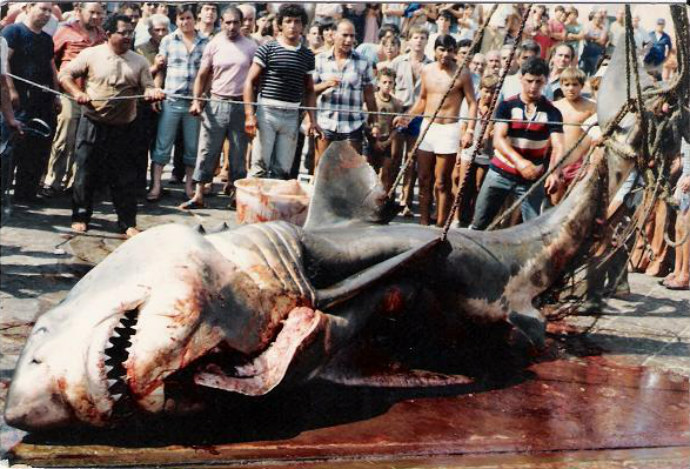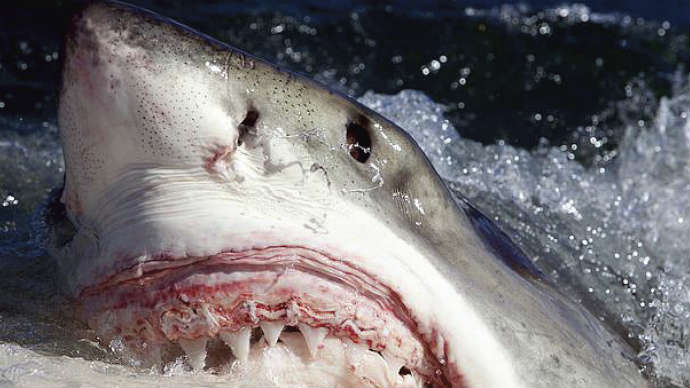 It has no natural predators (except man and on occasion the orca ): we are talking about the great white shark . The Carcharodon carcharias (this is the scientific name of the most famous shark in history) commonly known as the great white shark or simply “white”, is a species of great predatory shark that can be found in the coastal surface waters of all major oceans. . Even in the Mediterranean sea . Indeed, in this regard, there would be a lot to keep in mind:
It has no natural predators (except man and on occasion the orca ): we are talking about the great white shark . The Carcharodon carcharias (this is the scientific name of the most famous shark in history) commonly known as the great white shark or simply “white”, is a species of great predatory shark that can be found in the coastal surface waters of all major oceans. . Even in the Mediterranean sea . Indeed, in this regard, there would be a lot to keep in mind:

As confirmed by the historical and journalistic documents that have reached the present day, in fact, the specimens sighted in our sea, on average , would be even larger than those usually found in the oceans. The statistics of sightings recorded in recent decades would prove this. We do not know that it is only the result of an average based on a reduced presence of these animals. The fact is that the species is actually more widespread in the Mediterranean basin than one might think. In great white sharks, sexual dimorphism is present and females are generally larger than males. According to JE Randall, the largest white shark reliably measured was a 6.0m individual(19.7 feet) reported from Ledge Point, Western Australia in 1987 . Another large white specimen of similar size was verified by the Canadian Shark Research Center: A female captured by David McKendrick of Alberton , Prince Edward Island , in August 1988 in the Gulf of St. Lawrence off Prince Edward Island. This large female white was 6.1 m (20 ft) long. However, there was a report considered reliable by some experts in the past of a large white shark specimen from Cuba in 1945. This specimen would have been 6.4 m long.(21 feet) and had an estimated body mass of 3,324 kg (7,328 lbs). Despite this early finding, subsequent studies also revealed that this particular specimen was actually about 4.9 m (16 ft) long, a specimen in the maximum average size range. The largest white recognized by the International Game Fish Association (IGFA) is the one caught by Alf Dean in South Australian waters in 1959, weighing 1,208 kg (2,663 lbs). Several larger whites caught by fishermen were later verified, but were later not recognized by the official IGFA monitor recognition for rule violations. Let’s come to Puglia :
Perhaps not everyone knows that in the course of 1979 a huge specimen of great white shark was caught off the coast of Gallipoli (Lecce). A white shark about 6.20 meters long , much larger than many other specimens caught in the Pacific Ocean , made a fine show on the quay . The discovery took place just a few years after the release in cinemas of the film ” Jaws ” by Steven Spielberg (1975) which actually launched amarine biodiversity . The photo taken at the time in Gallipoli:

A rare but not unique episode in the Italian seas. Since then, however , sightings of white sharks have been very rare . Less rare are the general sightings of sharks, often not identifiable because they are filmed in an amateur way by bathers. This is the case of the summer of 2018 when the swimmers, also in Salento, came out of the water en masse to film three specimens of shark almost reached the shore. In that case it could be other smaller and more widespread species, such as the blue shark (Prionace glauca) or other rarer species such as the cow shark , one of which was caught in the Salento area. Returning to the ascertained sightings of white sharks, in Italy, many years before the Salento fishing, on 3 October 1909 , near Rovinj (Istria, then the Habsburg Empire) a fishing boat hauled on board a fish over 6.60 meters . Other animals of considerable size have often been sighted in the Strait of Messina and in the waters around Favignana and Marettimo during the “slaughter of tuna”. In fact, it seems that the agitation of the water, the terror of the tuna and the blood that flows when the nets are closed are sufficient elements to attract large predators. The “cagnazzi” of Trieste – Trieste would hold the record of sharks hunted in the Mediterranean, with significant catches of Carcharodon carcharias which took place between 1872 and 1909 . Even in the Adriatic port, in fact, tuna traps were operating and the “cagnazzi” (as the Julian fishermen used to call them) peeped out during the tuna hunt. Other sightings in the Mediterranean:
Malta – On April 17, 1987 a small fishing boat ‘hooked’ a great white shark (Carcharodon carcharias). With the help of a second vessel, the animal is towed towards the shore. When dissected, a dolphin, a sea turtle and another shark emerge from the fish. At the time of the measurement surprise and wonder: 7.14 m, that is almost one meter more than that captured in Castillo de Cojimar (Cuba), in May 1945 (6.40 meters) which makes it the largest specimen ever caught.
The last sighting of a ‘white’ dates back to May 24, 2018 , off the coast of the Tunisian tourist island of Djerba in the south of Sicily . The video of the captured shark, available online, is an evocative testimony of the charm, grandeur and at the same time of the fragility of animals increasingly victims of popular ignorance. It is good to remember that these creatures are not a danger, but an essential component of the millennial relationship between the Mediterranean peoples and the marine element. In June 2018, for the first time in over 40 years , a great white shark was spotted swimming off the Spanish island of Mallorca. He filmed that a wildlife conservation group around the Cabrera archipelago . The researchers explained that this is an important sighting because they had not been able to do so for many years. On this occasion, they saw the shark for over an hour about three meters from the boat. Great white sharks can weigh up to two tons and reach lengths of up to six meters, reaching speeds of over 60 kilometers per hour . The last sighting of this kind in the Balearics was of a fisherman in 1976 . According to a 2007 documentary, 27 great white sharks were caught by fishermen around the Balearics between 1920 and 1976. This sighting, emphasizes Giovanni D’Agata , president of the ” Rights Desk “, demonstrates how real is the presence of sharks in all the seas of the world, including the Mediterranean. Indeed, it is in the Mare Nostrum that the largest shark in history was caught. As reported by an article published in the Italian online edition of National Geographic , ” Despite the protection provided by various international regulations, the white shark of the Mediterranean inevitably suffers damageof anthropogenic origin that affect biomass and the marine food chain: overfishing, pollution and heating of waters, invasive and harmful activities of habitats, which end up radically modifying the sea in which the great predator of the abyss swims for millennia “ . of a real silent massacre: man has killed and is killing many more sharks than the white shark has killed (there are very few attacks on people) and all of this has a negative impact on the natural food chain and therefore also on the conservation of biodiversity marine , with risky consequences also for fishing. The photo of the shark caught in Tunisia in 2018:

Regarding the PugliaReporter.com blog , we remind you that it is possible to receive all the news in real time from Telegram by subscribing to the following address > https://t.me/pugliareporter < from Instagram at the following address > instagram.com/puglia_reporter < as well as from Facebook by clicking ” like ” on Facebook.com/PugliaReporter and from Twitter at the following address > twitter.com/pugliareporter < . Also through Telegram it is also possible to send us reports in real time also withvideos and photos . It is also possible to write to us via Whatsapp to send us reports also with photos and videos by clicking here and subscribe to the Whatsapp group to receive our links by clicking here .



